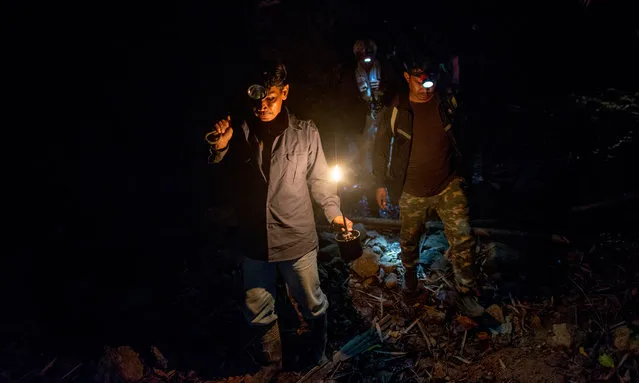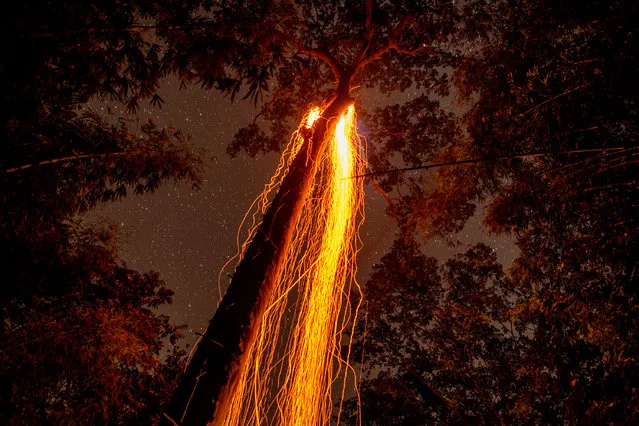
During the spring harvest season, a group of traditional Malaysian honey hunters travel to the rainforest near the Thai border to collect honeycombs from giant bees – and risk their lives climbing 200ft trees. Here: In the Ulu Muda forest in the Malaysian state of Kedah, the tallest trees called the tualang (Koompasia excelsa), are home to giant honey bees (Apis dorsata). (Photo by Hasnoor Hussain/The Guardian)

Traditional honey hunters spend a couple of weeks in the forest during harvest season in early spring. The skills are passed down through generations: they construct the ladder during the day and collect honey only on moonless nights, to ensure there’s no source of light other than the glowing embers from the torches that distract the bees. (Photo by Hasnoor Hussain/The Guardian)

The hunters chant before they start gathering the honey in order to sooth the angry bees. (Photo by Hasnoor Hussain/The Guardian)

To reach the hives, they use ropes and ladders to climb the immense trees, which can reach 289ft (88m). (Photo by Hasnoor Hussain/The Guardian)

Honey hunters check the ladder – it can be dangerous work. (Photo by Hasnoor Hussain/The Guardian)

The hunters use traditional knives made from buffalo bone to cut a section of the hive. (Photo by Hasnoor Hussain/The Guardian)

Bees are sensitive to light, which makes them follow the glowing embers down to the ground. (Photo by Hasnoor Hussain/The Guardian)

Honey hunters wait on the ground below as their friends rid the hives of bees up above. (Photo by Hasnoor Hussain/The Guardian)

The honey hunters camp at the side of Pedu lake for two weeks during harvest season, which stretches from February to March. (Photo by Hasnoor Hussain/The Guardian)

The Asiatic honey bees play a big role in maintaining the ecosystem of the rainforest by pollinating 50- to 70% of plants. Sustainable methods practised by the traditional honey hunters are important to ensure the bees come back in the future. (Photo by Hasnoor Hussain/The Guardian)

As the honey is so difficult to obtain and is rare, it’s very expensive. (Photo by Hasnoor Hussain/The Guardian)
22 Oct 2016 10:26:00,
post received
0 comments
